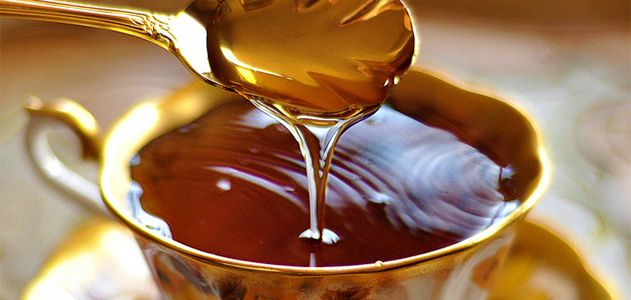5 Easy Ways To Check Whether Your Honey Is Pure Or Adulterated

Honey Purity Test
Honey can be an impressive alternate to unhealthy refined sugar which is nothing but source of empty calories. This wonderful ingredient from the nature is rich in nutrients, minerals, apart from its sweet taste. Well if you want to enjoy the benefits of honey, then you must check whether you are actually buying pure honey rather than adulterated. And the major problem about this nature’s gift is quality. It will be quite difficult and challenging to find good, pure honey. Ways To Check Whether Your Honey Is Pure Or Adulterated
Buy Stingless Bee Honey Cheruthen Online
Like many other food, adulteration is common in today’s world even in honey. It is quite easy to cheat with you as commercial honey can often be mixed with solution of glucose, high fructose, corn syrup etc. For example, when you open a jar of honey and hear this tiny little ‘pop’ sound, that could indicate that your honey is adulterated as some fermentation process may take place in it. Ways To Check Whether Your Honey Is Pure Or Adulterated
The best quality of honey comes from bees and not factories, the best way to start is to read the ingredient label. Look out for words like ‘raw’, ‘natural’, ‘forest honey’ or ‘organic’ – they may be safer than regular honey. But, now since food regulations remain a bit dodgy, you can never be too sure and this may be just a gimmick to sell stuffs!
So, can you really tell the difference between real and fake honey? To know the truth, you can now easily test it at home. Below are 5 Easy Ways To Check Whether Your Honey Is Pure Or Adulterated
5 Easy Ways To Check Whether Your Honey Is Pure Or Adulterated
The Thumb Test
On your thumb, place a small quantity of honey. See whether it spills or spreads like other liquids. If it spreads, then it is not pure honey. This is because pure honey is thick and it doesn’t spreads unlike the impure one. Pure honey sticks to the surface it is applied to and doesn’t drip away. Moreover, the taste of impure honey may linger due to the presence of added sugar.
The Water Test
In a glass of water, add a tsp of honey. If the honey dissolves in water, then it is adulterated honey. Pure honey has more denser texture and will settle right at the bottom of the glass as lumps. The same is the case with blotting paper or a white cloth. If you pour pure honey on the two, it will not get absorbed or leave stains.
The Flame Test
You may have not known this, but pure honey is inflammable. Although, we’ll request to you observe utmost caution while performing this test and do it at your own risk. Dip a dry matchstick in honey. Now strike the matchstick against the matchbox. If the matchstick lights, then your honey is pure. If it doesn’t light then your honey may be adulterated or may contain some amount of moisture added while contamination.
The Vinegar Test
In a bowl, add a tablespoon of honey, some water and 2-3 drops of vinegar essence. Mix it well. If this mixture foams up, there’s a very high chance that your honey may be adulterated.
The Heat Test
Take a small amount of honey and heat it on a flame. If the honey, caramelizes quickly and doesn’t become foamy, then it is pure honey. But, in case of impure honey it may not caramelize and become bubbly on heating.
Physical Appearances
A lot of the differences between pure and adulterated honey can also be identified just with the naked eye by examining its physical properties. Pure honey is dense and trickles only into a stream. It has a soft texture, will never separate into layers and offers a distinct sweet aroma. Raw honey, which is honey in its purest form, often leaves a slight tingling feeling or a mild burning sensation in your throat when consumed.




















